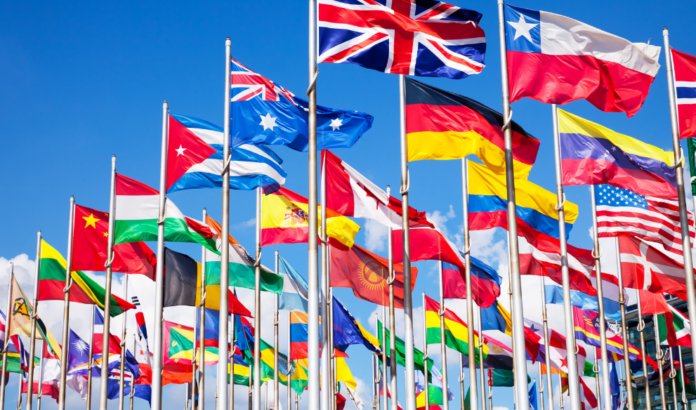Pretty much every patent attorney has encountered a situation like this: on a Friday afternoon, you receive an urgent request to file a new patent application immediately — one of the inventors is presenting the invention at a trade show on Monday morning, and a provisional application is urgently needed.
Upon reviewing the list of inventors, you notice that one of them is a resident of India. But since the invention was clearly made in the U.S. by a U.S.-based business, this shouldn’t be a problem, right?
Think again.
This all-too-common scenario for patent practitioners illustrates why, even for U.S. practitioners representing U.S.-based clients, analysis of foreign filing license requirements cannot be limited to consideration of U.S. law.
Under 37 C.F.R. § 5.11, for inventions made in the U.S., you need a foreign filing license before you file a patent application in a foreign country. Most other countries have similar restrictions that can apply when foreign entities or inventors are involved with the invention.
Your patent may be invalidated if you file too quickly or in the wrong country without the appropriate foreign filing license. So it’s important to get it right.
What is a foreign filing license?
In the most basic terms, a foreign filing license is permission granted by the national government of a country to file a patent application outside of that country.
While the foreign filing license laws themselves can vary substantially from one country to the next, the policy underlying these laws almost universally aims to regulate the export of ideas that might be relevant to defense or national security.
Given the growing ease of cross-border communication, the abundance of multinational businesses, and the increasing prevalence of multinational cooperation on projects, it’s likely that this area of law will become increasingly relevant to your high-tech business over time.
What is generally required in order to obtain a foreign filing license?
Laws surrounding foreign filing license requirements generally fall into three broad categories:
- Where, geographically, the inventive activity took place
- Jurisdictions with this restriction include the United States, China, Japan, Norway, Spain, Sweden, and Russia.
- The citizenship, residency, or place of business of the inventors
- Jurisdictions with this restriction include Bulgaria, Belarus, Denmark, Spain, Finland, the United Kingdom, France, Hungary, Italy, India, Norway, Sweden, Singapore, and Turkey.
- The nature of the subject matter disclosed in the invention (including items related to national defense, military applications, or state secrets)
(For a more comprehensive list of filing restrictions by country, please browse this list from WIPO.)
Given that every jurisdiction imposes unique requirements, it is easy to see how this seemingly inconsequential aspect of patent law could become considerably more complex and important. As an example, the foreign filing laws of different countries can — and frequently do — come into conflict with each other. As another example, the penalties for violating foreign filing license requirements can range from simply finding a patent to be invalid, to taking possible criminal action against the inventors.
What are the requirements for obtaining a foreign filing license in the United States?
The USPTO requires a foreign filing license only for inventions that are first made in the United States.
In other words, if the invention was made in the U.S., then U.S. inventors must receive a foreign filing license in order to have an initial filing in another country. Otherwise, they are expected to first file in the U.S.
The foreign filing license may be granted only if:
- The USPTO determines the invention does not relate to subject matter that would be a threat to national security (as set forth in 35 U.S.C. § 181); and
- A patent application for the invention has not yet been filed outside of the United States.
How do we obtain a foreign filing license in the United States?
Obtaining a foreign filing license in the U.S. is relatively straightforward. There are two ways to do so:
- File a petition under 37 C.F.R. § 5.12(b)
- Wait six months after filing an application and receive implicit consideration under 37 C.F.R.§ 5.12(a), provided there are no national security concerns
What happens if we fail to obtain a foreign filing license in the United States?
Failing to get a foreign filing license can lead to:
- Invalidation of subsequently granted patents (35 U.S.C. §185)
- A fine of up to $10,000 or imprisonment for up to two years, or both, if the patentee is found to have willfully disclosed confidential subject matter (35 U.S.C. §186)
We forgot to obtain our foreign filing license! Can we retroactively obtain one in the United States?
It is possible; 35 U.S.C. § 184 authorizes granting a foreign filing license retroactively “where an application has been filed abroad through error and the application does not disclose an invention within the scope of section 181” (that is, where disclosing the invention will not compromise national security).
Under 37 C.F.R. § 5.25, a retroactive petition must contain:
- A listing of the countries where the application was filed and the dates of filing; and
- A verified statement declaring:
- That the invention was not subject to a secrecy order;
- That the patentee diligently sought the retroactive foreign filing license immediately after discovering their error; and
- Why the foreign filing was made through error, without first obtaining the required license.
Where should we submit our initial patent filing?
On an obvious level, you should first file in whichever jurisdiction the law requires; for example, if your invention is U.S.-made, then you should first file in the U.S.
However, what happens if the laws of two jurisdictions contradict each other in terms of where a patent application must first be filed?
To illustrate, we can turn back to the example we raised at the beginning of this blog post of the late-Friday emergency filing, where an invention was made in the U.S. but one of the inventors is a national of India. On the one hand, we’ve already established that the U.S. requires a foreign filing license for inventions first made within its borders.
On the other hand, in India, the only relevant question is the inventor’s residence. In other words, if the inventor is a resident of India, then a foreign filing license is needed in order to have an initial filing outside of India regardless of where the invention was actually made.
Then, in our example, the invention is subject to a first set of laws requiring the invention to be filed first in the U.S. and a second set of laws requiring the invention to be filed first in India.
In a situation like this, what’s the best way to proceed?
Firstly, in this case, a last-minute emergency filing is likely not possible. As inconvenient as this might be, it’s preferable to potentially exposing the inventors to fines or jail time.
Secondly, it’s best to seek the advice of a qualified patent practitioner in the other country. In our U.S.-India example, it turns out that both the U.S. and India have a mechanism to obtain a foreign filing license prior to filing. Therefore, once you’ve obtained a foreign filing license in both the U.S. and India (a process that will take some time, and cannot be done at the last minute), you may then choose where to file first.
That said, unlike our U.S.-India example, the situation in some countries can be considerably more complicated. For example, Greece requires Greek citizens to file first in Greece regardless of where the invention is made — but, unlike India, does not offer a provision for obtaining a foreign filing license prior to filing. In situations such as this, you will need to work closely with a qualified patent attorney in the country of concern in order to determine the best course of action.
Avoid foreign licensing pitfalls: Consult a qualified patent practitioner
Before seeking patent protection for a new innovation, it’s good practice to check whether an inventor has foreign citizenship or residence, and where the inventive activity took place. That way, you can do a preliminary review of foreign filing requirements in the relevant countries and avoid being caught off-guard at the last minute. That said, the most reliable approach will be to seek the advice of a qualified patent practitioner in that country.
If you have any additional questions about foreign filing license requirements, please feel free to contact us.

Samuel Udovich
Sam Udovich is a patent attorney who helps tech companies develop patent portfolios, focusing on electrical and mechanical technologies.

